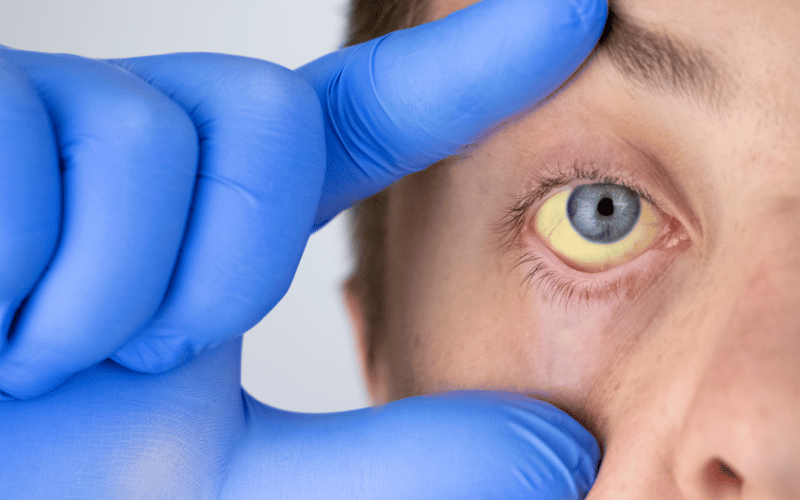2. Jaundice: The Yellowed Alert of Liver Distress

Jaundice, recognized by a yellowing of the skin and eyes, is a compelling sign of liver dysfunction. When the liver is compromised, as with Hepatitis C, it struggles to process a substance called bilirubin. Bilirubin is typically broken down by a healthy liver and eliminated. However, with Hepatitis C hindering optimal liver function, bilirubin accumulates in the bloodstream.
The buildup of bilirubin manifests as the yellow hue we associate with jaundice. It’s not just a cosmetic concern. That yellowish tinge speaks volumes about the internal battle raging within the liver. But jaundice isn’t just skin deep. Along with the evident discoloration, there’s an accompanying itchiness that can range from mildly irritating to intensely bothersome.
This itching isn’t the regular kind that can be placated with a little scratch. It’s deep-seated, sometimes almost under the skin. The discomfort can get to a point where it disrupts sleep and daily activities. But why does this itchiness occur? The exact reason remains debated, but it’s possibly due to bile salts accumulating in the skin as a result of the liver’s reduced capability to process them.
The symptom serves as a visual marker, a flag indicating that all’s not well internally. While the yellowish hue might cause alarm, it’s essential to see it as the body’s way of sounding the alarm, signaling an underlying issue that requires attention. (2)